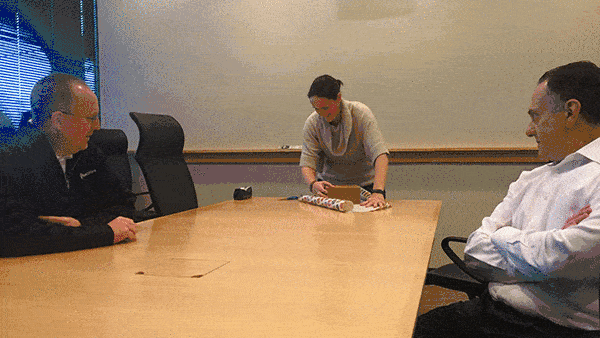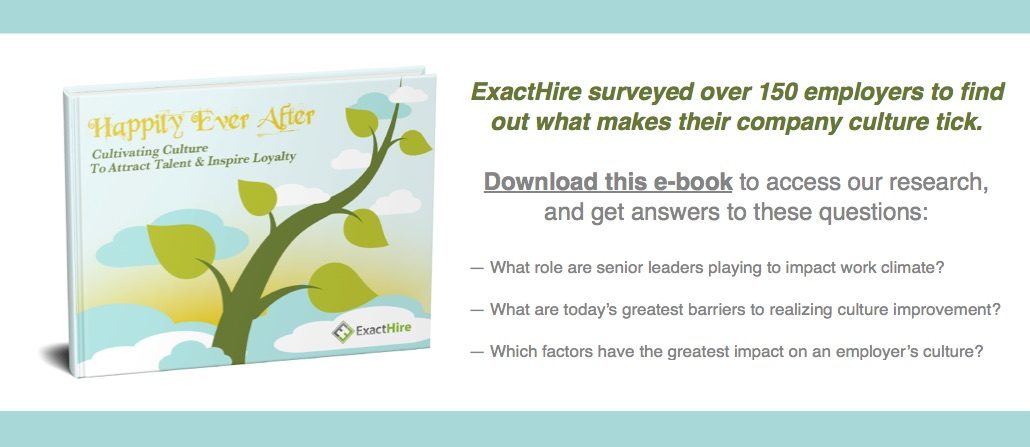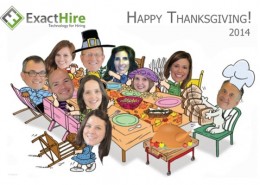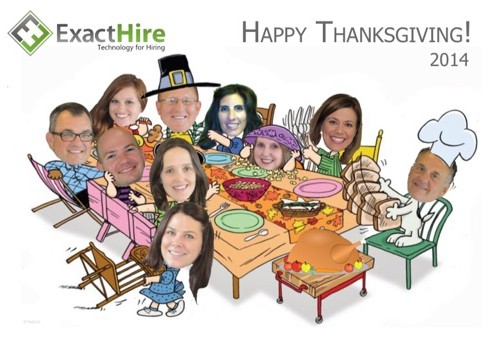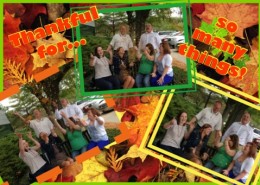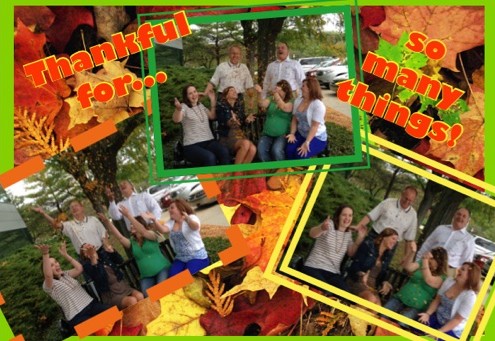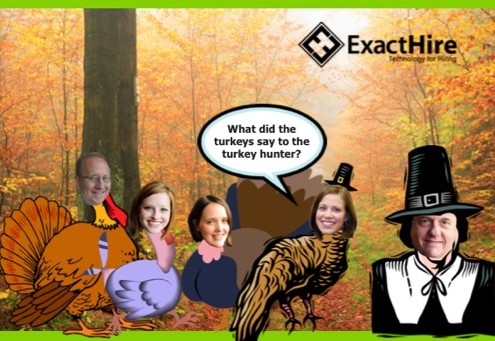Rewrite Your Talent Onboarding Story In 7 Game-Changing Steps
Once upon a time there was a talented, optimistic marketing professional named Simon. An exciting, fast-growth technology firm was fortunate enough to woo Simon during a flashy interviewing process and he was pleased to accept its offer of employment shortly thereafter. His new position would offer him more responsibility, more pay and a chance to learn some new technologies. Sounds like a storybook ending for Simon, right?
That’s what he thought, too, until he began to experience the firm’s employee onboarding process. While the tech firm had many things going for it, it had a few things to learn when it came to giving its new hires the best opportunity to be successful and productive in their working environment. Let’s see how Simon’s story unfolded and consider what the tech firm might have done differently to make a positive impression on him in the critical early days and months of his employment.
1 – Wait, What’s Pre-Boarding?
Once Simon accepted his offer, he still had to give his current employer a few weeks’ notice before finishing his job there. While his new employer was hiring frequently, and at such a pace that it often had employees start just days after accepting an offer, Simon was an anomaly in that he had some time to kill before his start date. Unfortunately, his new tech firm was radio silent during this period. Simon actually had to proactively reach out to confirm details like start date and arrival time. He wondered if his new company had forgotten about him.
Rewrite the Story: Simon’s new hiring manager could have called or emailed him to welcome him to the fold and prep him with some housekeeping details prior to his first day. This “pre-boarding” scenario (aka the period before official employee onboarding) is also a golden opportunity for an organization to send a welcome kit to a new hire with goodies like a prepared training schedule, visual organizational chart, fun facts about the company and some branded company swag.
A best practice during pre-boarding is to make sure that your company’s existing employees know about the forthcoming start date of your new employee so they can be ready to make him feel at home. This also gives the onboarding process stakeholders a chance to update recurring meeting requests and email distribution lists to include the new employee. Otherwise, Simon might feel silly if he was the only one that didn’t know to show up to the monthly corporate meeting.
2 – Learning the Unwritten Rules
Simon was an organized guy and liked to be prepared. During his interview, they told him that they had a relaxed dress code, but he still hadn’t seen any evidence of that and didn’t want to be the only guy in jeans on his first day. So, he showed up in business casual to be safe meanwhile contemplating the extent of the company’s flexibility when it came to the “flexible work schedule.” In addition, he was still in limbo with how daycare arrangements would work for his daughter, too. He would continue to feel a little stressed about that until he could adjust her drop-off and pick-up times to accommodate his new schedule. Of course his nerves weren’t helped when a bunch of his new co-workers asked him why he was so dressed up for his first day.
Rewrite the Story: Starting a new job is stressful enough; don’t make it worse by keeping your new hires guessing. At a minimum send new hires a Q&A sheet of commonly asked company culture-related questions before their first day.
- Go the extra mile by pairing a new employee with a mentor buddy who can give him the real dish, and
- assembling an attractive book or website full of pictures of your employees enjoying the unique aspects of your culture (for example, hitting the gong to celebrate a goal achievement or modeling work-appropriate attire).
Better yet, create a video office tour in which you interview employees that answer these burning company culture questions. Give employees like Simon the confidence to know when it’s actually okay to play ping-pong during work hours.
3 – You Mean I Don’t Even Get a Red Stapler?
Once Simon was shown to his working space, it was remarkably bare. While thankfully his laptop was awaiting him, there wasn’t much else other than tedious employment paperwork. His cube neighbor said that the supplies he needed were around, and that he could show him the office cabinet. So, Simon grabbed some sticky notes, a pen and a notepad since he wasn’t sure how much was appropriate to take. Back at his desk, he passed the time waiting for further direction (his boss was in a meeting on the morning of his first day) by investigating a new “twiddle your thumbs” finger workout on his smartphone…or at least he felt like that was what he was doing.
Rewrite the Story: Not having supplies ready on a new hire’s first day is frustrating and makes a poor first impression on a new employee. Stock a new hire’s space with all the essentials…have email setup, browsers downloaded and include a handy guide to applications that will be used on a regular basis. Complete the staging with a thoughtful welcome sign with the employee’s name. To make this setup easy on existing employees, too, have a basic onboarding checklist or template in place that can be quickly customized based on departmental needs. You don’t have to reinvent the wheel with every new hire.
Identify additional employee onboarding best practices like implementing software to automate both the workflow-related checklists for existing employees, as well as the actual paperwork completed by new employees. Instead of taking up two hours of a new hire’s first few days on the job with boring, redundant paperwork, give him a web-based portal to enter that data in about fifteen minutes. Make sure your onboarding process brand matches the sleek corporate brand that people have come to expect from a fast-growth tech firm.
4 – Be More Innovative Than Lunch
Simon was pleased to learn that he wouldn’t have to figure out lunch on his first day. His manager, as well as some other members of his department, did take him out to a nice restaurant to get to know him better. There’s nothing wrong with lunch as long as that’s not all you do to learn about new hires.
Rewrite the Story: Use your organization’s industry, resources and/or culture to create a unique experience for your new employees. For example, a technology firm might have a space for all employees to share their favorite mobile app along with comments about why each app was selected. A design firm with graphic artists on staff might choose to commemorate the arrival of newer employees by adding their caricature to a wall of fame after 90 days. An organization of travel buffs could have a giant world map and invite new employees to mark the exotic places to which they have traveled with pushpins. Be imaginative and discover each employee’s passion.
5 – My Brain is Only So Spongy
Once his first few days had passed, Simon had to admit that his training schedule did become quite rigorous…full of people to meet all day everyday. He was hustled from one office to another, desperately trying to absorb all the information he heard like the latest chamois cloth mop from QVC. Alas, cramming isn’t generally effective; however, sometimes employers still feel compelled to fill all the gaps in the first few week’s of an employee’s training schedule. While the firm did gain some points for doing its best to expose Simon to a number of areas in the hopes that he’d be more productive sooner, they should have allowed some time for his early foundational knowledge to soak in and then solidify.
Rewrite the Story: Consider a shortened training schedule for the early days of a new hire’s employment. By empowering an individual to train and shadow with others for just part of the day, you enable him to take the rest of the day to reflect and absorb the information gleaned. He can form questions, review the most recent lessons and be better prepared to be a true participant in the rest of his training activities. Incorporate gamification elements into the training and orientation phase by creating company- and/or department-specific quizzes to assess the employee’s learning while also providing entertaining education.
6 – That’s the End?
A month into his employment experience, Simon was starting to feel like a member of the team. Especially when he was thrown into the training mix for three newer hires that were starting the coming week. That’s right, Simon’s fifteen minutes of new hire fame were already up. And while it’s not a bad idea to help new hires hit the ground running by involving them in improving the onboarding process for future hires, you also don’t want to let your hair down too early with your newer employees. The firm was riding on its own cultural coat tails too aggressively. Keeping employees for the long-term requires a learning and development culture that doesn’t end after a new employee’s first three weeks on the job.
Rewrite the Story: Chart an onboarding course for the long haul and remember that the good stuff happens at milestones you intentionally plan for new hires along their entire employment journey…whether it is three weeks or one year into employment. Beyond new hire paperwork and software login credentials, build in triggers for activities like
- more advanced learning “courses” once initial onboarding prerequisites are met,
- exposure to other departments to better learn how one’s own job impacts others,
- individual assessment in order to uncover opportunities for synergy between the newer employee, his hiring manager and/or other department members,
- succession planning conversations, and
- personal achievement recognition at notable anniversary dates.
7 – Get What You Expect
Being organized and self-motivated, Simon already had his own ideas about what he wanted to accomplish in his career with the tech firm. He certainly knew his own job responsibilities and had a vague idea of the potential career path available; however, he was foggy on his firm’s expectations when it came to targeting dates for specific skills mastery and project completions. He was looking forward to really producing now that he had a few months behind him, but he would have appreciated more detail about what success had meant for other top performers in the past.
Rewrite the Story: Having a culture of performance management doesn’t mean forcing a performance review every 90 days, or perhaps ever. But, it does mean having candid, personalized conversations with employees about their passions, developmental goals and the organization’s expectations for achievement. Create a job success factors document for all positions so that new and existing employees alike have a benchmark for comparing their own performance to the model for success for their role. Include details about initial job priorities, expected time frames for project completion and resources available from the organization to support the employee. Then, work with employees to align their strengths and passions with opportunities for increasing responsibility and rewards. Providing a map to success will set employees up to have a true sense of accomplishment once they’ve reached important job milestones.
Where Will Simon’s Story Take Him?
Is your organization guilty of any of the onboarding oversights that befell Simon in his new position? If so, take action now so that when your newer employees get a recruiter InMail message after seven months on the job they politely decline the chance to learn more about the next exciting, fast-growth tech firm.
This blog originally appeared on elementthree.com/blog.
Image credit: Swoosh Goes Swish ![]() by slgckgc (contact)
by slgckgc (contact)

